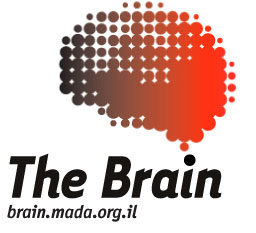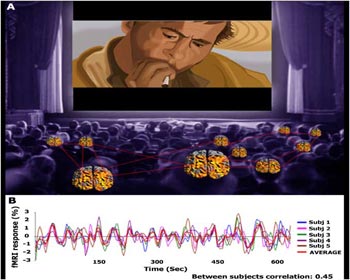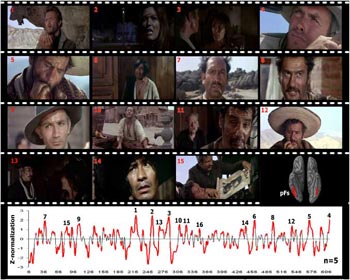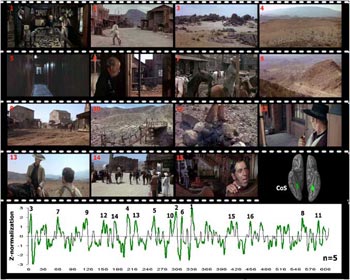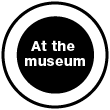


 |
||||
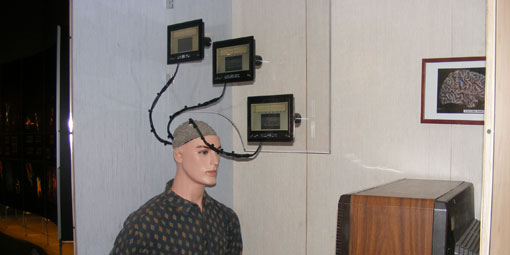 |
||||
Research team: Background Research Questions Research Methods In a typical experiment, the individual lies inside a large electromagnet (as shown in the illustration) and performs certain tasks, such as watching visual stimuli and listening to auditory stimuli. The visual images are transmitted to the magnet optically, so that the computer generating the images and the screen on which they appear are not affected by the magnetic field. A second computer continually records the measurements of brain activity and later analyzes the data collected. This research is unconventional both in its experimental design and the methods it uses to analyze results. For one, it measures brain activity while the participants are viewing a segment of a movie. This stimulus is complex and "natural," in contrast with the simple and artificial stimuli, such as static pictures, used in conventional research. Its methods of data analysis are also unique. The usual method is to start with a predetermined series of simple stimuli and look for the areas of the brain that are activated by each separate stimulus. Here, the researchers took the opposite approach. They presented the brain with a complex stimulus consisting, essentially, of a wide variety of different stimuli. Then, they looked for the moments in the movie during which the greatest amount of brain activity was recorded. In this way, for each area of the brain examined, the researchers were able to characterize the type of stimulus to which that area was sensitive. The Experiment 
Results of the Experiment
In follow-up research, Dr. Hasson found that for highly suspenseful movies, like Alfred Hitchcock's, even greater similarity was evident in brain activity: 70 percent of the areas in the brain functioned similarly for different participants. Another key finding was that it was possible to identify specific "areas of responsibility" for different areas of the brain. The diagram below indicates brain activity in an area called FFA.
If we look at the moments in the move that produced the greatest activity in this area, we can see that they are when faces appear. The diagram shows individual frames from the movie at the moments in time when the greatest brain activity was recorded. The frames are numbered according to the level of activity, in descending order (with the first picture representing the highest level of brain activity). In this same way, the researchers characterized brain areas related to spatial orientation, interpretation of dialogues, and interpretation of hand movements.
The research also showed that different types of movies activate the areas of the brain in different ways. There is a correlation between the brain's level of activity and the degree of arousal or interest created by the movie. Discussion and Conclusions The researchers found striking similarities in the brain activity of the participants who viewed the movie. They noted high correlations not only for brain areas that process initial sensory information, but also for areas in which higher-level information processing, such as face recognition, takes place. By choosing this unconventional method of analyzing their data, the researchers were able to characterize the functional responsibilities of different areas of the brain. The research supported previous findings about these areas and also discovered new information about brain functioning. More about...
|
||||
